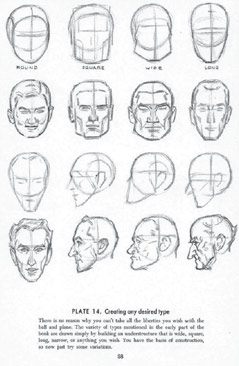Reading Between The Line: Self Teaching - Books that teach, by the best
 CREDIT: DRAWING OF THE HEAD AND HANDS, BY ANDREW LOOMIS
CREDIT: DRAWING OF THE HEAD AND HANDS, BY ANDREW LOOMISThe fundamental advice given by artist Andrew Loomis is invaluable and timeless.
Learning anything your heart desires has never been easier in this day and age – barring of course the distractions that constantly surround us.
Despite the countless Wikipedia pages and YouTube tutorials available – a scattering of disorganized information – books written by the champions of their fields are still king.
Want to pick up a skill? Try taking a look at these.
Art
Most people haven’t progressed beyond scribbling stick figures and brick-shaped cars with oval wheels. However, for those who want to bring the swirls in their head on paper – after all, art skills are only a tool that bring fertile imaginations to life – investigating Andrew Loomis’ books are a great start.
Loomis was – and still is – one of the greats. A commercial artist by trade, Loomis created one of the first most prolific casual art tutorial books, Fun With A Pencil. Its immense popularity led to more releases, such as Drawing of the Head and Hands and Figure Drawing for All it’s Worth, just to name a few. Don’t let its age fool you for the fundamentals of Loomis’ books are still relevant, and, perhaps most importantly, are divulged in a humorous fashion that makes learning feel like fun.
Having recently come back in print after being unavailable for nearly 70 years, the time has never been riper to pick up these classics.
Programming
Technology seems to be as prolific as the number of people who use it and yet are ignorant about it. But the roots of the phones and computers we use every day are hardly a mystery for they operate on instruction and logic, as do human beings. It’s simply a matter of learning what computers are capable of and how to communicate with them. You’ll soon learn of the ease of learning programming with Dennis Ritchie’s C. If you’re unfamiliar with the programming world, C is one of the giants upon which a lot of our current day technologies stand upon – a simple yet powerful language still in active use since its inception in 1972. There’s many tutorials on getting started with programming, which may be worth a look at if you’ve little grasp of how to get started, but the book C still remains the most concise, no nonsense way to learn the language.
Screenwriting
Even if your movie idea is amazing, incredible, action-packed, sexy, smart, buzzword, buzzword, it still needs to become more than an idea. It needs to be a tangible, legible screenplay. When it comes to screenplays, legibility doesn’t just mean having the right kind of margin spacing and using blocky fonts. There’s a reason why screenwriters are the ones adapting your favourite novels. Screenplays are different from novels, short stories and even stage plays. Syd Field, a Hollywood script screener who held some of the most acclaimed screenwriting workshops in the industry, wrote Screenplay in 1979. While the world of cinema has progressed almost infinitely since, the core concept of what makes a screenplay work haven’t changed.













